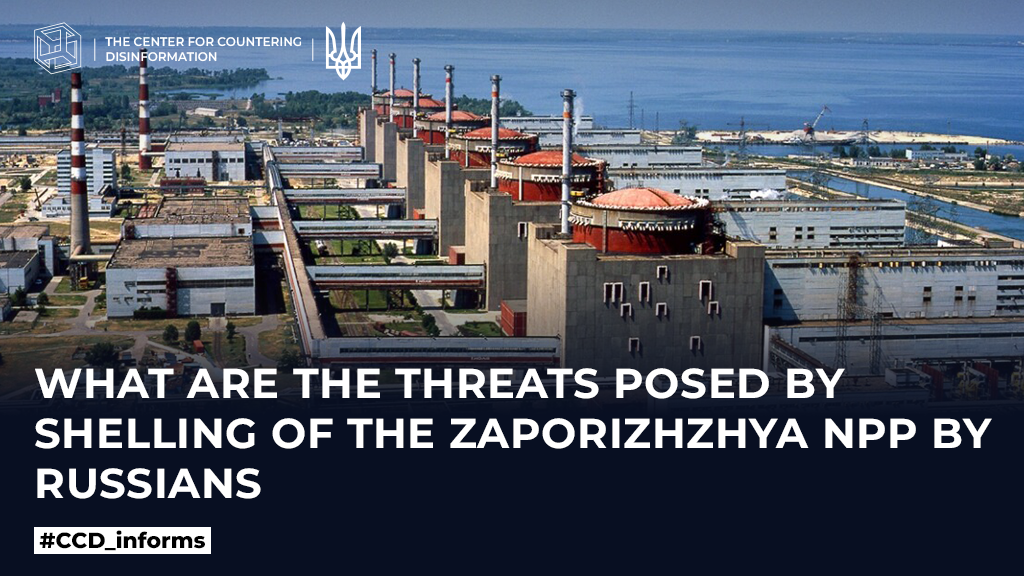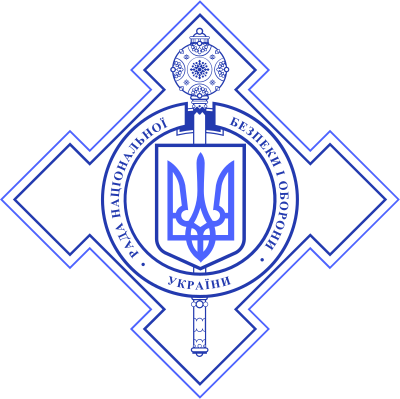As a result of damages caused during the massive shelling by the Russian Federation in Ukrainian cities, on May 22 at 5:26 am, the high-voltage transmission line “Dniprovska” at 330-750 kV was urgently disconnected, which was the last external power source for the cooling pumps of nuclear fuel in the spent fuel pools and nuclear reactors of the Zaporizhzhia Nuclear Power Plant. The power plant automatically switched to diesel generators with a limited fuel supply. Contrary to the aggressor’s expectations, “Ukrenergo” specialists promptly restored the power transmission line and switched the station back to power supply from the Ukrainian energy system. Therefore, the immediate threat to nuclear safety was eliminated, and the radiation levels at the station and its surroundings remained within normal limits.
However, the incident at the ZNPP (Zaporizhzhia Nuclear Power Plant) is not a coincidence but a systematic demonstration of Russia’s use of nuclear threats as a lever of influence on Ukraine and the world.
❗️Since the beginning of March 2022, the ZNPP has been occupied by Russian military. They exert strict control over the work of the Ukrainian personnel, even prohibiting them from communicating with each other. Since August, Russians have regularly shelled the ZNPP and Energodar, resulting in the power plant being left without electricity seven times and entering a state of blackout. The last time, Zaporizhzhya NPP was completely de-energized on March 9th, when Russians conducted a massive missile strike on Ukraine.
What threats does it have?
If there hadn’t been an immediate response from “Ukrenergo” to restore external power supply to the plant, the complete blackout of all power units at the ZNPP would have halted the cooling process of the nuclear fuel, similar to what happened at the plant on November 23, 2022. This would have turned the NPP into a gigantic slow-acting atomic bomb. In such a scenario, any damage or interference in the production process without following protocol could lead to a radiation accident, the consequences of which for Ukraine and European countries could be much more serious than those of the Chernobyl and Fukushima nuclear disasters. Already, the blackout at the ZNPP has resulted in a widespread power outage in Zaporizhia city.
What do the actions of Russia indicate?
Firstly, it indicates that Russia has once again resorted to its familiar tactic of technological blackmail since the beginning of the war. By accusing the Ukrainian Armed Forces of shelling the power plant, the occupying authorities seek to shift the responsibility for the nuclear and radiation safety of the facility onto Ukraine and force the country’s leadership and the West to agree to terms for ending the war. In order to maintain maximum control over the situation, Russia is trying to de facto establish its “ownership rights” over the Ukrainian power plant. As a matter of fact, the occupiers have already illegally changed the legal address of the ZNPP, falsely “subordinating” it to Moscow, and forced 3,000 employees to obtain Russian passports, while insisting on signing contracts with “Rosatom.” To limit the presence of international observers at the plant, Russia banned the planned rotation of participants in the IAEA’s monitoring mission in February, and on February 10, the organization announced that it could not renew the mission’s composition for safety reasons. On March 1, a representative of the fake “administration” of Zaporizhzhia region, V. Rohov, accused Western intelligence agencies of a “disruption” in the planned rotation of the IAEA mission, claiming that they intended to accuse Russia of obstructing the mission’s work.
What to do?
Given that the nuclear and radiation safety of not only Ukraine but also European countries depends on the safe operation of the ZNPP, the international community should consolidate all diplomatic and other efforts to withdraw Russian forces from the territory of the captured nuclear power plant and transfer its full control to Ukrainian “Energoatom” experts. In order to deter direct attacks on Ukraine’s nuclear facilities, the nuclear industry of the Russian Federation should be deprived of all rights and privileges in the IAEA and other international institutions related to the use of nuclear energy, and included in the next package of EU sanctions. President of Ukraine, Volodymyr Zelensky, conveyed this message to the leaders of the G7 countries during his working visit to Hiroshima, Japan.
What are the threats posed by shelling of the Zaporizhzhya NPP by Russians

- 22 May, 2023









